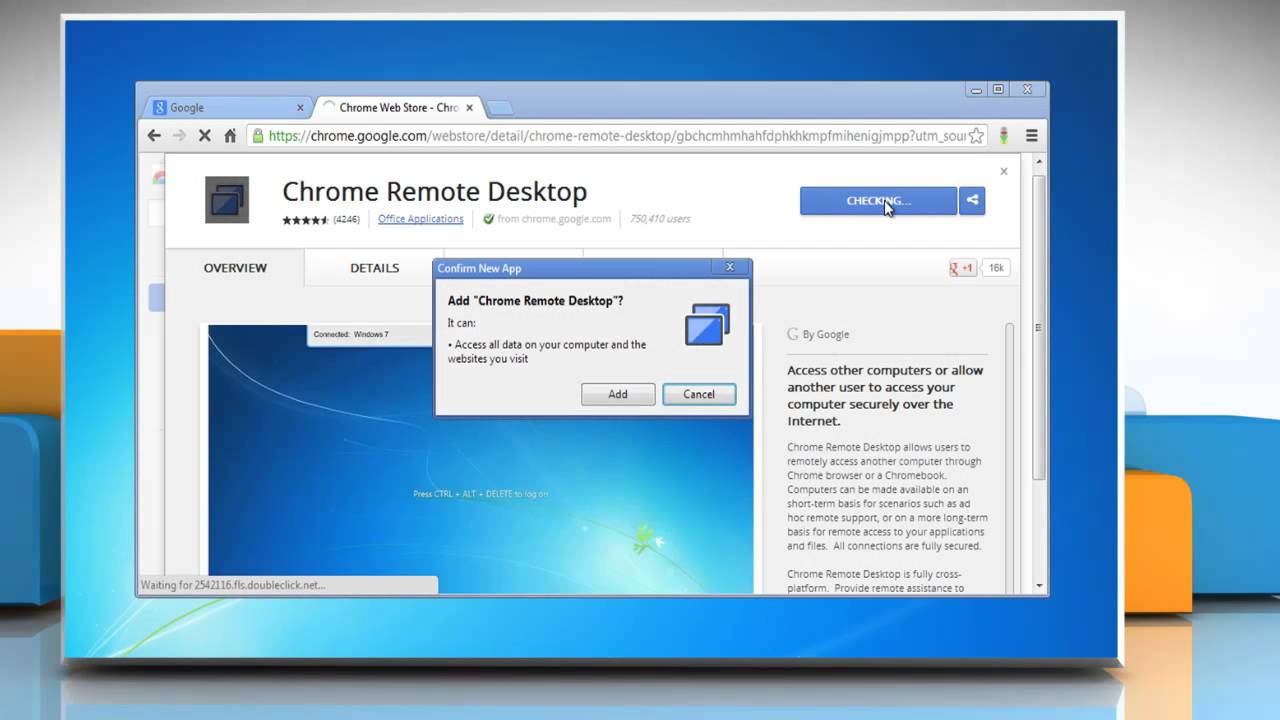Chrome Remote Desktop Viewer
After the recent flurry of news stories regarding TeamViewer and compromised computers (you can read and our article ), there’s been quite a bit of interest in alternative remote desktop programs. Fortunately, there’s practically as many ways to set up a remote desktop session as there are motivations for doing so.RELATED:Rather that simply throw a laundry list of remote desktop solutions at you, we’ve opted to group them into two major categories: operating-system-based remote desktop solutions, provided by the same company behind your operating system, and third-party remote desktop clients. Each of these solution categories offers something of value depending on your needs.
How to install tape drive in backup exec. Let’s take a look at each category now and highlight the benefits, shortcomings, and differences.As we run through the features of the different remote desktop solutions, keep a few important questions in mind. Is the solution just for your own use or for helping friends and relatives?
Just because you’re tech savvy and can easily configure things doesn’t mean they will. Do you need unattended access?
A solution that requires someone at the remote PC is no good if nobody is home. Do you need on-the-go access from your mobile device? If so, a good mobile client is a must. Keeps your needs (and the abilities of the people you’re helping with the remote desktop) in mind as you read through the features. Operating System-Based Remote Desktop: Old School and Baked InBoth Windows and Mac OS have had remote desktop solutions built in for ages. As such, people are comfortable using them–they’re right at hand, free, and supplied by the company they trust enough to run their entire computer.While they aren’t difficult to use, the biggest shortcoming of the built-in tools is that they need to be configured by the person on the other end.
If you’re doing the configuring (either on your own machine or on the behalf of your relative when you’re visiting them in person), this isn’t a big deal. If said relative just called you up and needs help, however, you’re stuck not only dealing with their actual problem but the problem of walking them through turning the remote desktop functionality on. Once turned on, however, both the Windows and Mac OS solution allow for unattended use.

Windows Remote Desktop Connection (Free)RELATED:Windows Remote Desktop Connection runs on the propriety (RDP) and is widely supported both by Windows itself and a variety of third party client applications.You can find client apps for other desktop operating systems (like and ) as well as mobile platforms (like and ).Although, there’s a bit of a catch: while all versions of Windows can connect to other machines via the RDP client, only the professional versions (and above) of Windows have an RDP server. Since most friends and relatives you may be helping are likely running some Home release of Windows or another, you won’t be able to connect to them. In addition to that, if you’re using it outside your home network you’ll need to configure the router of the remote network (e.g. Your parents’ home network).Further, you need to know the remote IP address of the server and the login credentials for that machine. If its your own machine you’re connecting to, that’s not such a big deal.
If it’s the machine of a friend or family member you’re helping, that might be a deal breaker: maybe they aren’t technically competent enough to look up their own IP address and maybe they don’t want to give you their login. Although so far we’ve made it sound like Windows Remote Desktop Connection is a terrible product for remote desktop use, it’s actually–in the right context–the best solution.
If you’re running a household or office of computers with Windows Pro or better (so they all support RDC hosting), connecting to those machines with RDC is such a smooth experience it’s like literally being right at that computer. The display is crisp, fast, and full color, the connection is responsive, and other than the tiny blue toolbar at the top of the screen indicating your’re using RDC, you’d never know you weren’t using the PC sitting on the desk next to you. For home or office use with Windows computers that support it, using Remote Desktop Connection is a no brainer because that’s what RDC was made for: local network administration in a professional environment, not cross-country tech support calls with Grandma.
Mac OS Screen Sharing (Free)RELATED:The Apple solution is a bit more accessible in that all Mac OS computers have “Screen Sharing” built in. Even better yet, Apple’s Screen Sharing allows for a variety of connection methods–you can use your own computer login to login from afar, your Apple ID, send a request, or use a VNC (Virtual Networked Computer) connection.
Chrome Remote Desktop Description: Chrome Remote Desktop allows users to remotely access another computer through Chrome browser or a Chromebook. Computers can be made available on an short-term basis for scenarios such as ad hoc remote support, or on a more long-term basis for remote access to your applications and files. All connections are fully secured.Chrome Remote Desktop is fully cross-platform.
Chrome Remote Desktop Mac
Provide remote assistance to Windows, Mac and Linux users, or access your Windows (Windows 7 and above) and Mac (OS X Yosemite 10.10 and above) desktops at any time, all from the Chrome browser on virtually any device, including Chromebooks.For information about privacy, please see the Google Privacy Policy and the Chrome Privacy Policy.